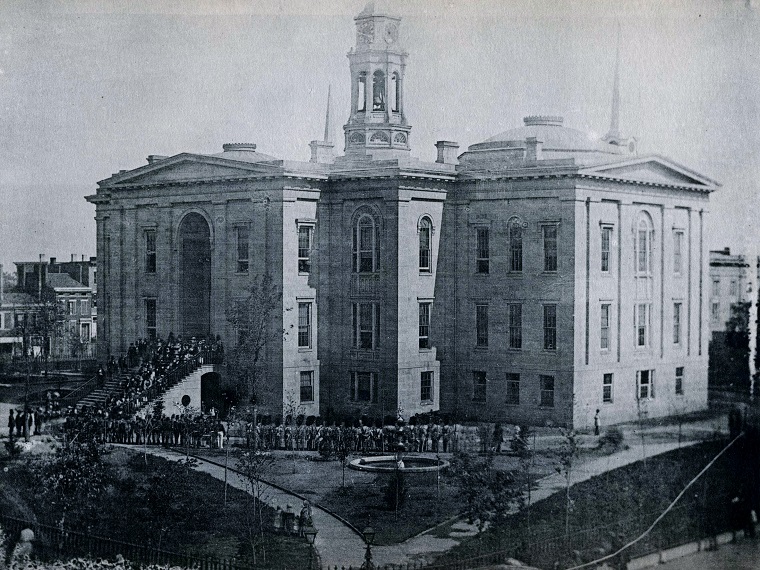Today in Chicago, you can call 911 and get rapid emergency assistance. Things were very different in 1835. The telephone hadn't been invented and dealing with emergencies was largely a self-help affair. Professional police and fire forces were a thing of the future. This was true worldwide. Even Scotland Yard was only six years old. In a medical emergency, you sent a runner to the doctor.
Chicago had just got its first hand-pumped fire engine. Due to the lack of a written record, details are a bit vague. Presumably, in case of a fire, you would run to the engine, ring a bell vigorously and wait for the volunteer company to come.
By 1837, the Ordinances spelled out the duties of the volunteer fire companies. Every able-bodied citizen was drafted. Each building was required to keep a "leathern fire bucket." The citizens were required to help pull fire apparatus and to take the leathern bucket to the scene of the fire. As there were no streetlights, you were required to burn a candle in each window until the fire was put out.
According to History of the Chicago Police, policing was much less organized. During the day, you could find the sheriff or town constable and ask him to arrest criminals. If the prosecution was successful, you would receive half the fine assessed. If you wanted to recover stolen property, it was best to apply to private detective agencies called "thief takers."
At night, the safety of the city was turned over to an overworked night watchman who patrolled the pitch black streets armed with a lantern, a staff and a wooden rattle called a creaker. Again, details are vague, but in case of an emergency, he would presumably rattle loudly and call for help from the nearby houses.
The 1840s and 50s saw increased organization of the police and firefighters. The equipment and personnel of the volunteer fire companies increased. The number of and professionalism of the police also increased. The police started patrolling during the day as well as at night. However, emergency communication and dispatch still depended on runners, bells and yelling loudly.
Agitation for a fire telegraph system began in 1858. The Chicago Tribune pointed out that a recent large fire at Lill and Diversy’s Northside brewery required Michael Diversy to send a horseman first to the nearest fire station, then onto neighboring fire stations in order to gather enough firemen and equipment.
In addition to runners, the Fire Department used a watchman posted on the top of the courthouse. If he saw a fire, he would dispatch firefighters by ringing the courthouse bell.



Add a comment to: Calling 911, 1835-1860: Technology That Changed Chicago